Laudy barn in Oradour-sur-Glane
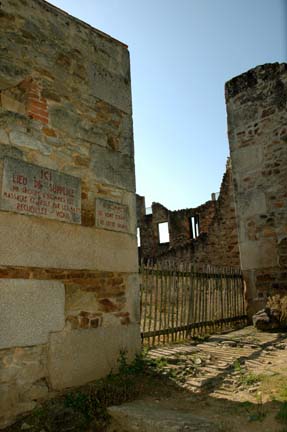
The photo above shows the door into the
Laudy barn at the far end of the Fairgrounds. According to Robert
Hebras, one of the survivors of the Laudy barn, the machine guns
were placed at this door. Hebras wrote in his book, "Oradour-sur-Glane,
the Tragedy Hour by Hour," that the soldiers were laughing
and chatting before the shooting began. The victims didn't know
that these soldiers belonged to the Waffen-SS; they were told
by the soldiers that they would be released if they were innocent.
Hebras wrote that all the men in the six killing sites were killed
at the same moment after the sound of a loud explosion was heard.
The photo below shows the area that was
the inside of the barn where the men were shot before the building
was destroyed. In the background, on the right, you can see a
building which is on the other side of the fairgrounds.
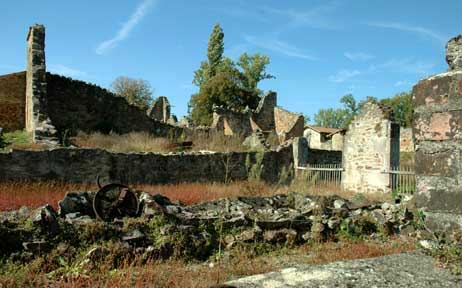
Hebras wrote a small book about what
happened, describing the events hour by hour. He said that he
escaped from the burning barn by going through a door into a
yard which had no exit. This door is shown on the back wall in
the center of the photo below. To the right of the door is a
board on the wall, leaning at an angle. Note the church tower
sticking up in the center of the photo in the background.
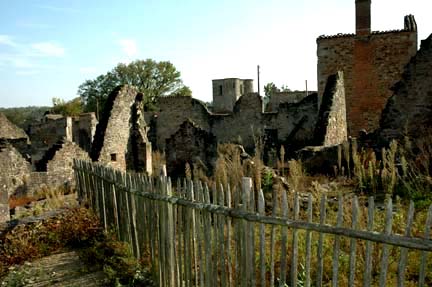
The photo below shows the yard which
had no exit, on the other side of the door. Behind the camera
is the road to the cemetery. The second photo below shows another
view of the yard with the road to the cemetary on the right.

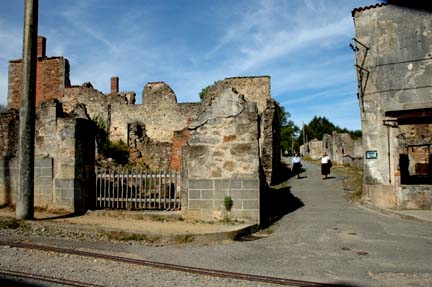
The men who escaped from the Laudy barn
and survived were Mathieu Borie, Clement Broussaudier, Marcel
Darthout, Robert Hebras and Yvon Roby. Pierre-Henri Poutaraud
escaped from the barn by a different route, but was shot and
killed by the SS soldiers. Marcel Darthout had been badly wounded
by four shots.
Hebras wrote in his book that when he
realized that he was inside a yard with no exit, he went back
into the barn and through another door in the front of the barn
which led to a stable. He saw a shadow and, thinking it was an
SS soldier, he made a quick exit into another yard where he found
four other men who had escaped. Mathieu Borie was a mason by
trade; he made a hole in the wall of a building that was crumbling
and the men went inside another barn. Then two soldiers came
into this barn and set it on fire. The men were forced to leave
the barn and enter a yard that was open to the fairgrounds. This
yard in shown on the left in the photo below. The men hid in
some rabbit hutches until around 7 p.m. when they escaped via
the road to the cemetery, which is behind the camera in the photo
below.
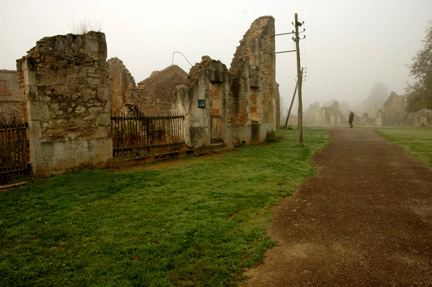
According to Sarah Farmer, who wrote
a book entitled "Martyred Village," 20-year-old Robert
Hebras joined the Maquis or the French resistance, along with
his childhood friend, Andre Desourteaux, after the massacre.
Andre was a postal worker in Limoges, who lived in Oradour. Hebras
had nothing left to lose since his whole family had already been
killed by Waffen-SS soldiers who had wrongly believed that the
peaceful village of Oradour-sur-Glane was in the hands of the
French resistance. Hebras wrote in his book that he was only
slightly wounded and that 2 of the survivors of the Laudy barn
were not wounded at all.
|